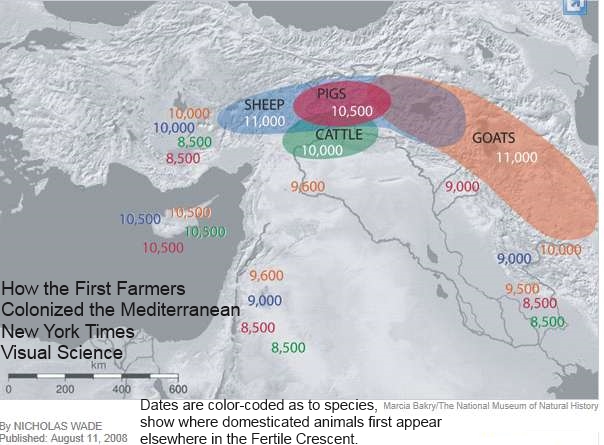(slide 4) This is about our two ancestors. Look at that very carefully! What do you see? You see a tree. On the left over here, you see a woman on a throne. On the right, you see a man with horns on his hat (which indicates deity in Sumerian mythology). And you see a snake behind the woman. It's interesting also to notice that there are seven branches on this tree and that it has fruits dangling from it. Mind you, this isn't a made-up image; it isn't somebody's fictional idea of Adam and Eve. This is a Sumerian cylinder seal impression. It's a genuine artifact from the ancient Near East. It's extra-biblical. And if you want to see it with your own eyes, you'll find it in the British Museum.

(slide 5) And this is our canvas for the first part of the talk. It is in this area we're going to try and paint a history of Genesis and the history of the development of civilisation. In particular we are going to concentrate on the two famous rivers, Tigris and Euphrates and the sources of those two rivers in this mountainous region which the classical writers called Armenia. In our time, Armenia moved slightly northward. This is also the region we call today Azerbaijan. And this, of course, is also the region called Western Iran or Iranian Azerbaijan - it has all those names. I'm going to take you into this region here to have a closer look at it. I think that there are some interesting things we will find.
Source:
(slide 5) And this is our canvas for the first part of the talk. It is in this area we're going to try and paint a history of Genesis and the history of the development of civilisation. In particular we are going to concentrate on the two famous rivers, Tigris and Euphrates and the sources of those two rivers in this mountainous region which the classical writers called Armenia. In our time, Armenia moved slightly northward. This is also the region we call today Azerbaijan. And this, of course, is also the region called Western Iran or Iranian Azerbaijan - it has all those names. I'm going to take you into this region here to have a closer look at it. I think that there are some interesting things we will find.
Source:














Comment